Picture this: a painter hunched over a vast canvas, layering colour with furious tenderness; an architect sketching sweeping lines of order against the chaos of crumpled tracing paper; a dancer, mid-pirouette, caught between grace and collapse; a poet murmuring words into the hum of a synthesiser. Creators across disciplines, each wrestling with contrasts—precision and freedom, control and abandon. Their visions, disparate yet symphonic, converge under a single roof in Milan, inside the stark and storied walls of Fonderia Macchi. Here, the air thickens with anticipation as editors, critics, celebrities, and visionaries gather for the unveiling of BOSS Spring/Summer 2026.
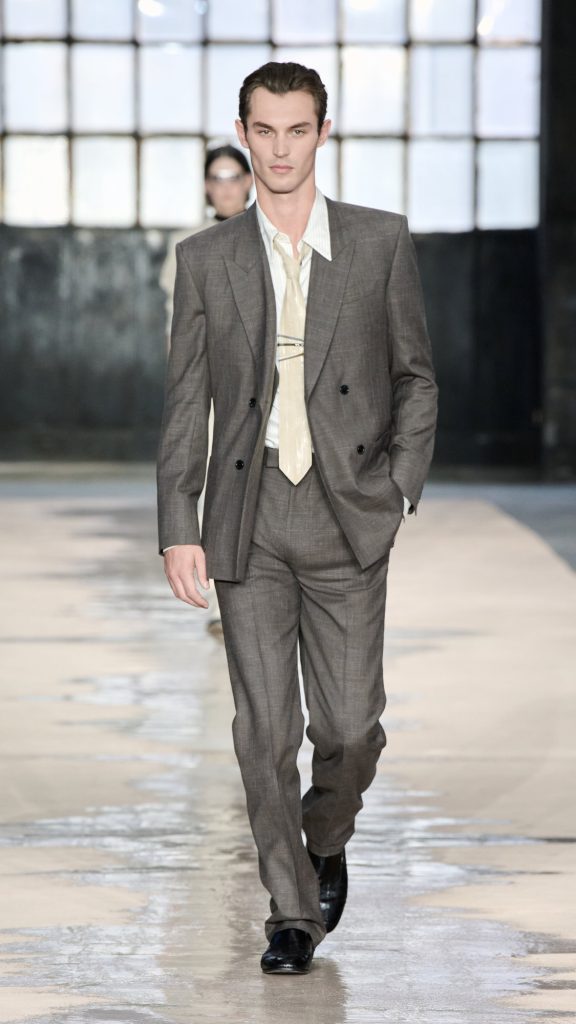
Marco Falcioni, Creative Director of HUGO BOSS, has christened this season The BOSS Paradox—a study of contradictions where order collides with disorder, and cohesion is born from dissonance. It is a bold recalibration of the house codes: functionality sharpened, simplicity elevated, precision laced with provocation. What emerges is not merely a collection, but a dialogue—between art and fashion, structure and spontaneity, past and future.
A Living Dialogue Between Art and Fashion
Few fashion houses court art as intently as BOSS. The brand’s history is one of cultural patronage—an embrace of illustration, painting, photography, dance, design. This season, the legacy deepens. The runway was not just a stage but a gallery of motion, framed by an installation from Dutch artist Boris Acket. His reimagining of Aesthetics of Decay transformed foil into a sentient, creasing organism—part sculpture, part performer. It fractured light across garments and faces, guiding models as though they were players in an otherworldly ballet. What might have been static décor became a breathing companion, ageing before our eyes.
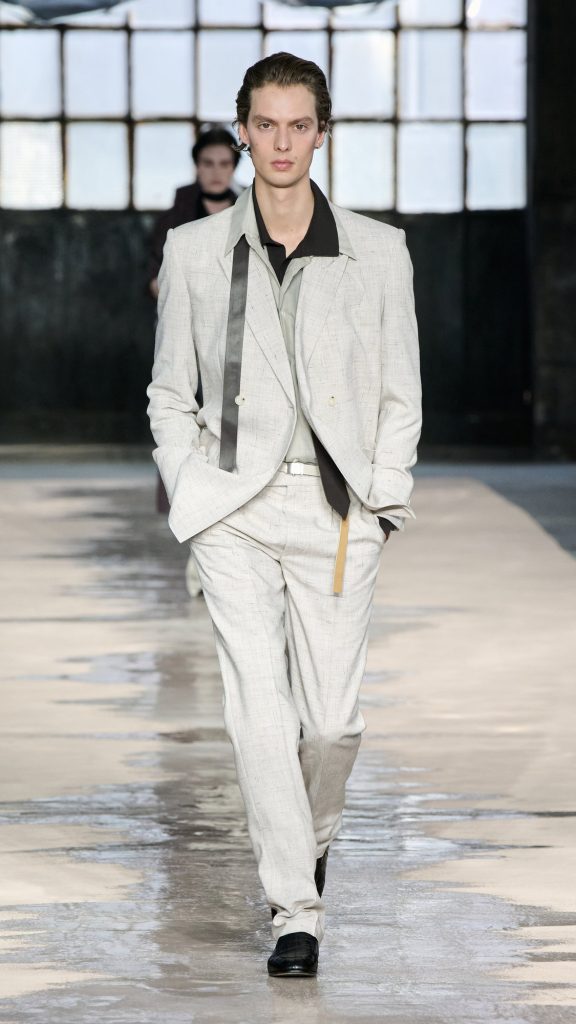
Layered onto this living set was the digital avant-garde: four artists—Sybille de Saint Louvent, Andrés Reisinger, Joann, and Sasha Stiles—each wielding AI as brush and chisel. Their works, spanning from chromatic textiles to flowing poetic visuals, teased the show weeks before Milan. It was an inspired collision of tangible craft and intangible imagination, amplifying the paradox at the heart of the collection.
Geometry Meets Flux
The clothes themselves whispered and roared in equal measure. From the strict tailoring and geometric clarity of 1960s German industrial design came a purity of line—sharp suiting, sculptural dresses, precise outerwear that spoke of order and control. Yet, threading through this discipline were gestures of disorder: flowing silks that caught the air like dancers’ skirts, asymmetric drapes echoing spontaneity, textures that seemed unruly by design. The tension gave each look an energy beyond fabric—garments became metaphors for lives lived in contrasts, poised between restraint and release.
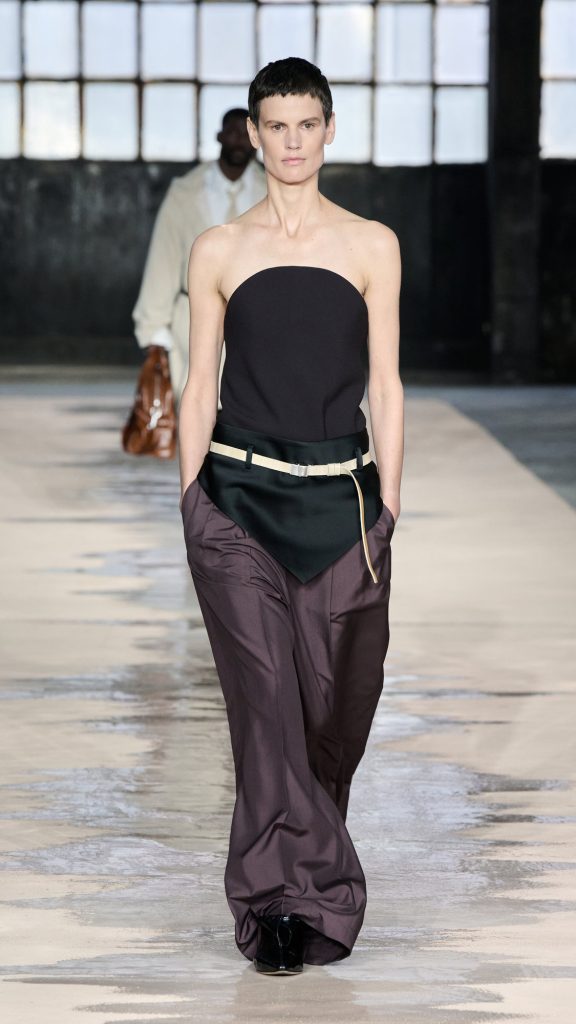
This was not minimalism in its austere sense, but minimalism awakened—recharged with dynamism, fluidity, and art’s defiance of confinement.
A Front Row of Icons
To witness it all were more than 600 guests—ambassadors of sport, music, cinema, and design. David Beckham exuded quiet charisma, while S.COUPS, the global K-pop phenomenon, closed the show with a finale that rippled with electricity. On the runway itself, artists, photographers, dancers, and cultural figures walked alongside professional models, blurring the hierarchy of who gets to embody fashion. Each step affirmed the collection’s purpose: BOSS is not a costume for one identity, but a canvas for many.
Why SS26 Matters
In a world where wardrobes are often overwhelmed with fleeting novelty, BOSS SS26 stands apart by offering pieces that are both pragmatic and poetic. They speak to the individual who sees clothing as more than utility: garments here are tools of self-expression, mirrors of the inner paradox every creative mind carries. Precision does not eliminate play; simplicity does not silence complexity.
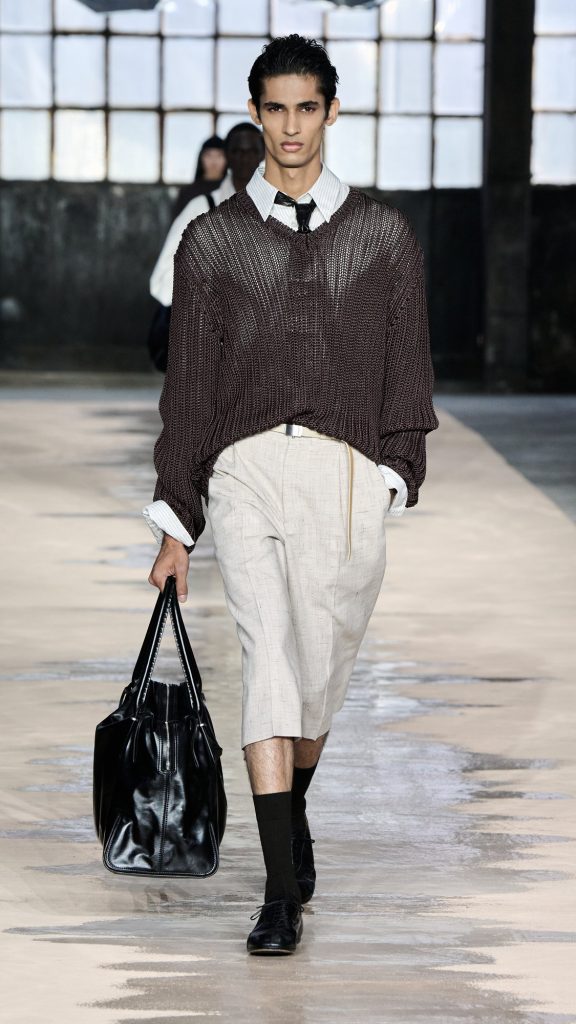
To own a piece from this collection is to wear balance itself—to cloak oneself in discipline and freedom, in clarity and imagination. It is clothing not just to be worn, but to be lived, questioned, and redefined.
Spring/Summer 2026 belongs to those willing to embrace contrasts. And in the paradox, BOSS has given us not confusion, but cohesion—a wardrobe that dares us to stand firmly, stylishly, in the middle of contradictions.
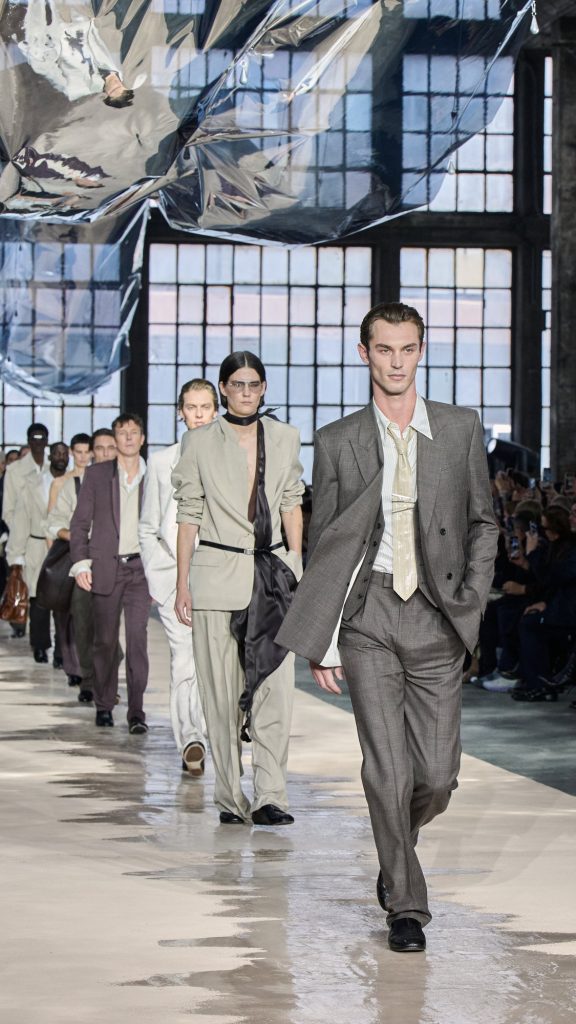
BOSS SS26 collection will be available in all BOSS stores globally as early as the final quarter of 2025.
*Photos courtesy of BOSS.
